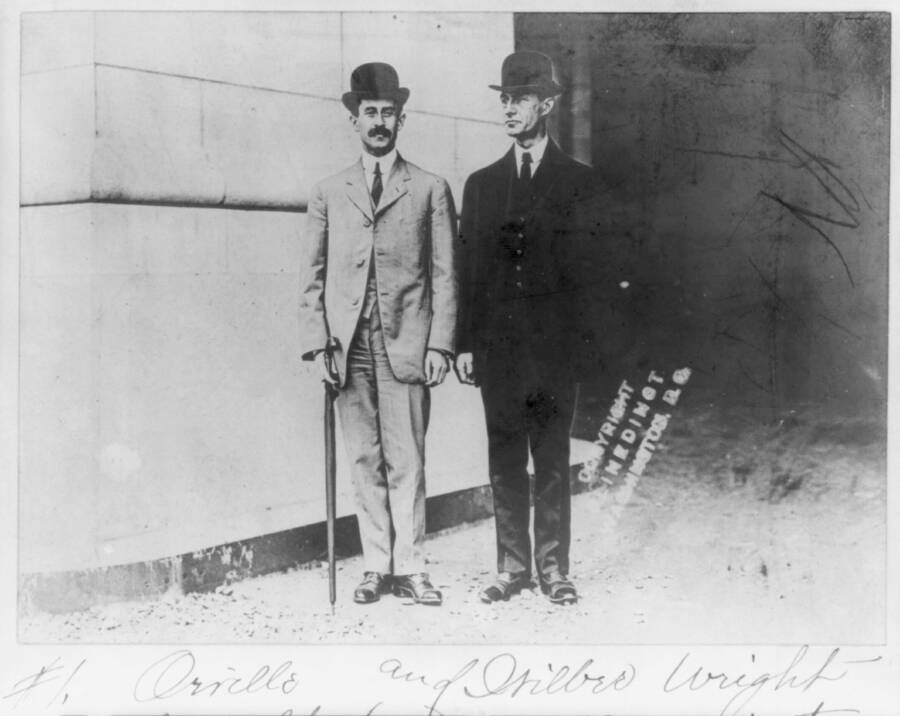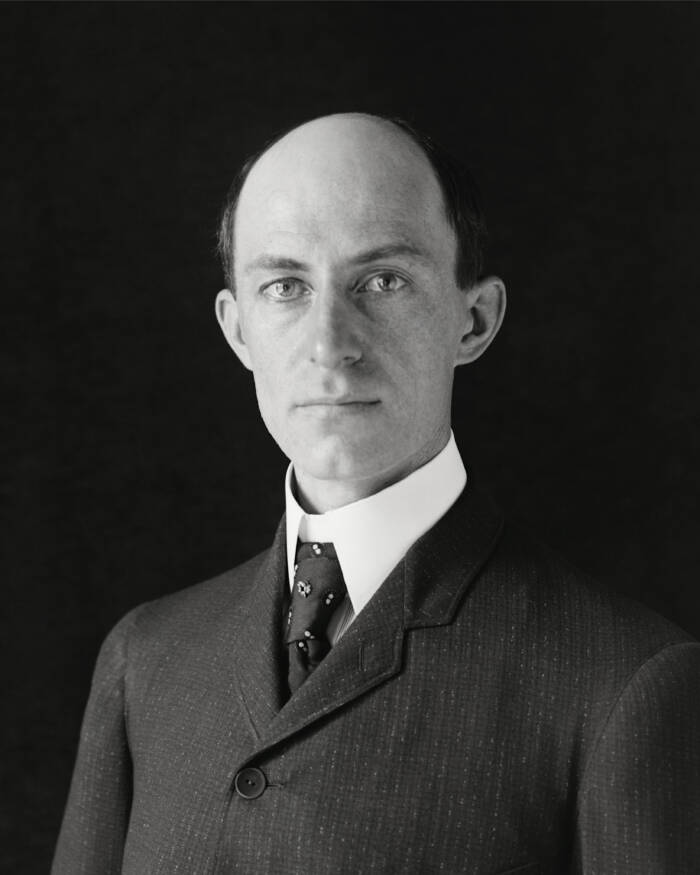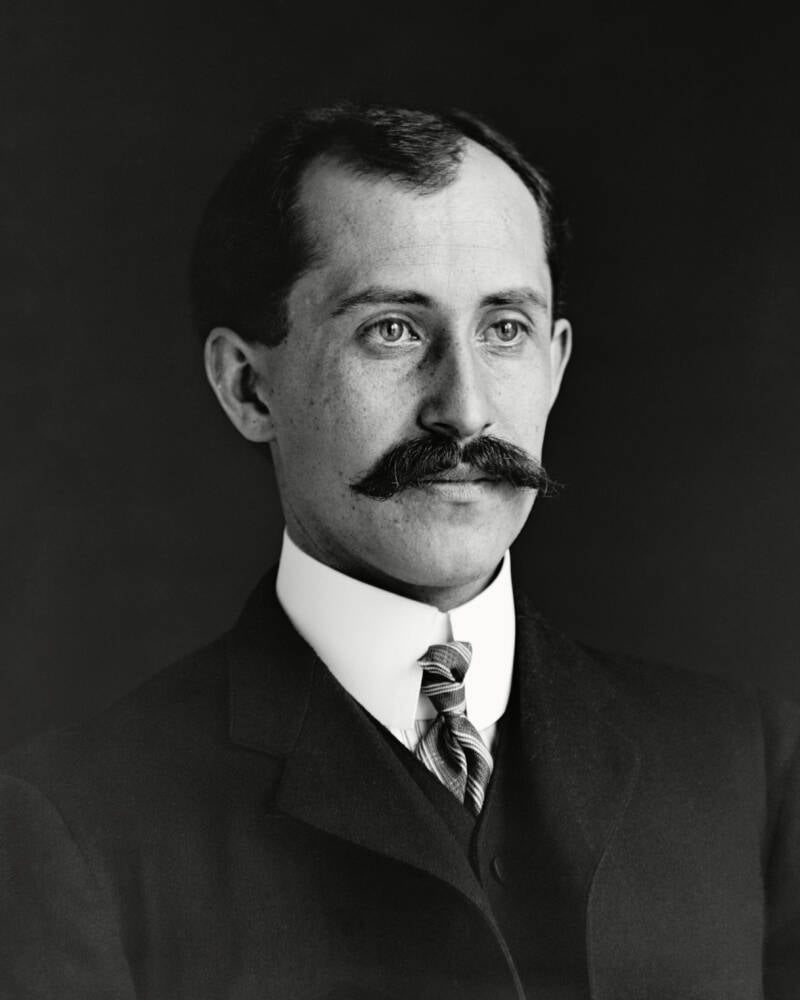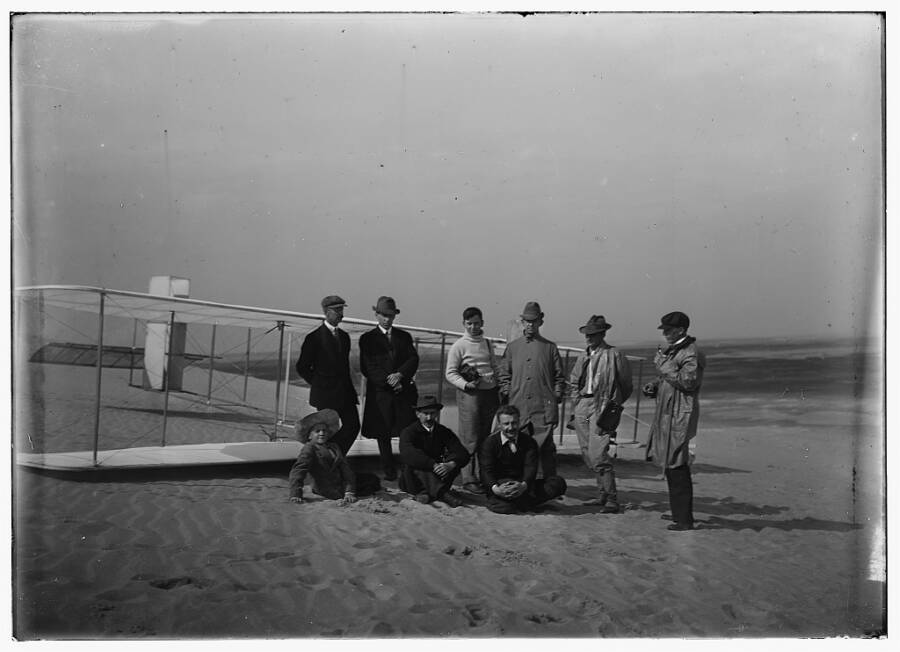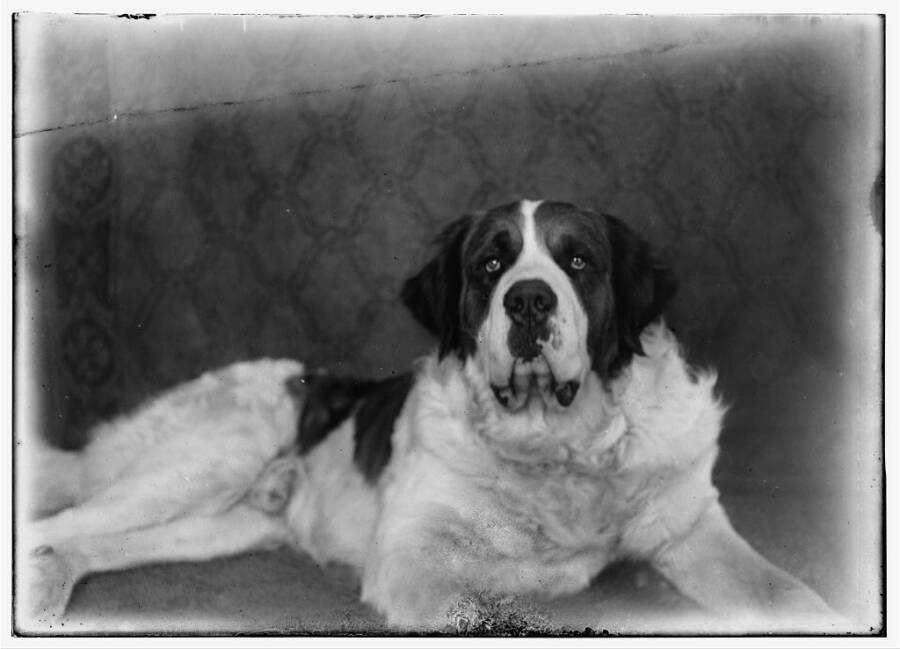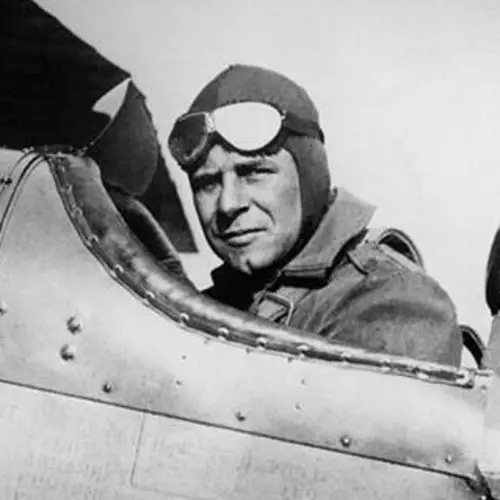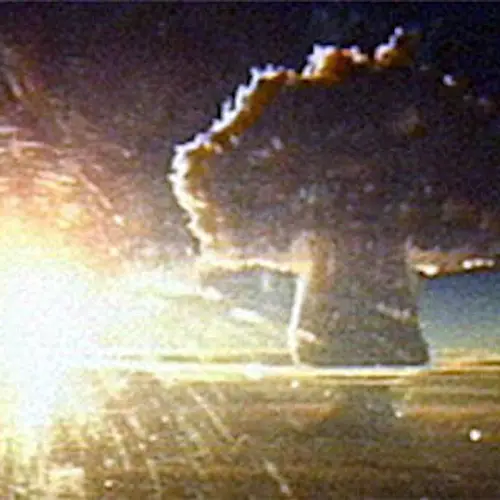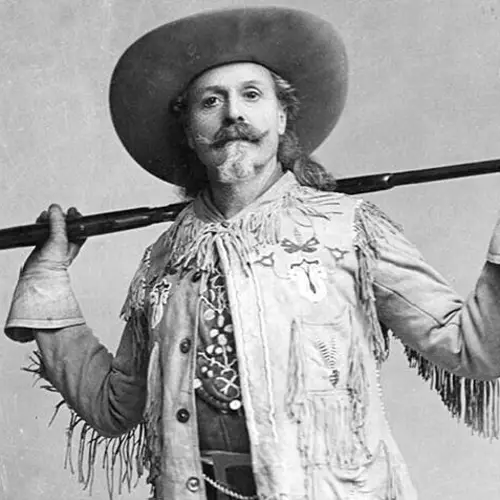Orville and Wilbur Wright made the first successful powered and controlled airplane flight in Kitty Hawk, North Carolina on December 17, 1903, forever changing transportation, warfare, and industry.
During the tail end of the 19th century and into the start of the 20th, the world entered what would become known as the “Golden Age of Aviation.” Spurred by scientific curiosity, technological advancements, and a desire to conquer the skies, inventors across the planet began drawing up plans to create the world’s first flying machine, but nobody was successful — until the Wright brothers came along.
Orville and Wilbur Wright had been fascinated with aviation ever since they were young, when their father brought home a small toy helicopter he had picked up during his travels. They were also enchanted by the work of Otto Lilienthal, a German pioneer who conducted various gliding experiments that demonstrated the feasibility of heavier-than-air flight.
Eventually, the Wright brothers opened a shop together where they sold, repaired, and designed bicycles. Their focus, however, remained on the skies. When they found out about Lilienthal’s tragic death in a gliding crash in 1896, it only made them more determined to solve “the flying problem” and build a functional airplane of their own.
It took them less than 10 years.
The Early Lives Of Orville And Wilbur Wright
Wilbur Wright was born on April 16, 1867, near Millville, Indiana. His brother Orville was born four years later, on August 19, 1871, in Dayton, Ohio. They were two of seven children born to Milton Wright, an ordained minister of the Church of the United Brethren in Christ, and Susan Koerner Wright.
Growing up, the Wright children were encouraged in their intellectual pursuits. As Orville Wright once explained it, per the National Park Service, their parents encouraged them "to investigate whatever aroused their curiosity." He credited this environment with laying the groundwork for their later success.
In 1878, Milton returned from a trip with a toy helicopter powered by rubber bands. The Wright brothers played with the toy until it broke and then spent time repairing it and even building their own versions.
Yet, despite this intelligence and passion, neither brother attended college. In fact, they were the only two of their siblings who didn't.
Wilbur was originally set to attend Yale University, but a hockey injury in 1885 derailed those plans, and he spent the next three years withdrawn and reclusive. Orville, meanwhile, felt that high school had not stimulated his curiosity enough. He was more drawn to working with his hands and dropped out of school to establish his own printing business.
After their mother died of tuberculosis in 1889, Orville convinced Wilbur to join him in the print shop, but they soon found themselves in an entirely different line of work.
From A Print Shop To A Bicycle Store
The print shop had originally been the project of Orville and a childhood friend by the name of Edwin H. Sines. They opened the printing business in 1886 under the name Sines & Wright in their hometown of Dayton, Ohio, printing things like flyers, business cards, tickets, and advertising circulars.
At some point, the two men came into conflict over some business matters involving a client who paid them in ears of popcorn. Sines felt they should eat the popcorn, while Orville felt it would be better to sell it and make a profit. In the end, Orville bought out Sines' half of the business, and the matter was resolved.
Despite this, Sines stayed on as an employee, and the two remained lifelong friends.
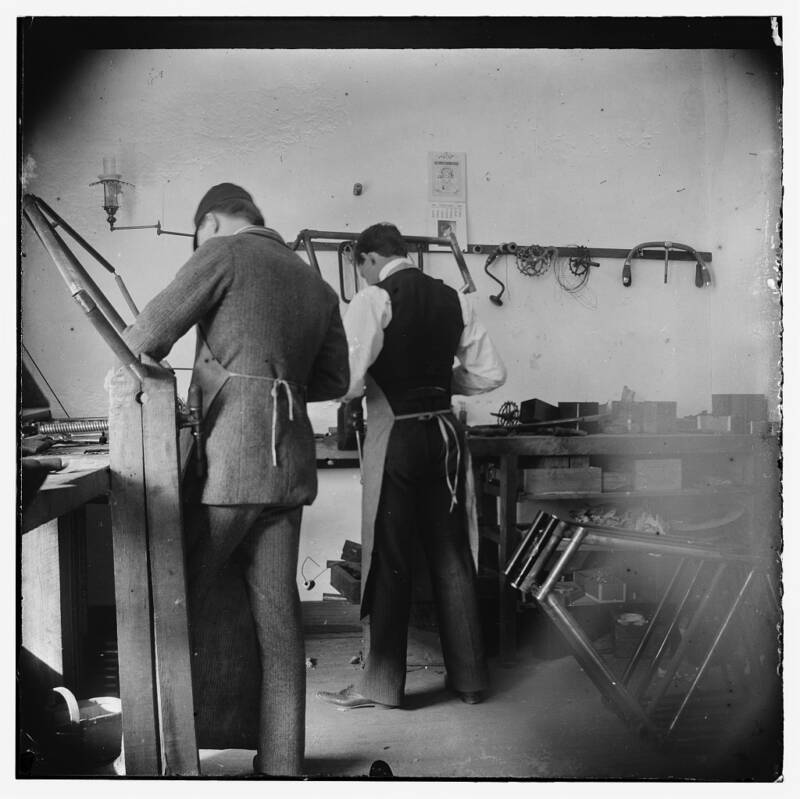
Library of CongressOrville Wright and Ed Sines filing frames at the bicycle shop. 1897.
Once Wilbur joined his brother at the print shop, now renamed Wright & Wright, business started to take off. They moved into a new, larger space and expanded their work. In 1889, Orville started a local weekly newspaper called West Side News, which ran for 78 issues before the Wright brothers decided it was more profitable to stick to printing other people's work.
They did, however, work with Orville's high school classmate, the now famous writer Paul Laurence Dunbar, to publish the Dayton Tattler, a weekly paper focused on the local Black community. Unfortunately, its run was even shorter, lasting just three issues.
Then, capitalizing on the bicycle craze of the 1890s, Orville and Wilbur Wright opened the Wright Cycle Exchange, later renamed the Wright Cycle Co., in 1892. There, they sold, repaired, and even manufactured their own line of bicycles. It earned them a modest income, a good reputation in the local community, and the skills they would eventually need to work on their flying machines.
They still owned their print shop as well, though Sines was doing most of the day-to-day work on that end.
The Wright Cycle Co. expanded to at least five different locations across Dayton by 1897 as Orville and Wilbur Wright developed their own line of bicycles. Unlike the bicycles produced at major manufacturers, the Wrights' bicycles were handcrafted, showcasing a degree of quality not seen elsewhere. However, it also meant that very few Wright brothers bicycles were ever produced.
Between 1896 and 1900, the brothers built around 300 bicycles, only five of which are still known to exist today.
At the same time, Wilbur and Orville Wright became fascinated by the pursuits of aeronautic inventors around the world. In particular, they followed the work of a German aviator named Otto Lilienthal, who had been studying the physical principles of winged flight and applying them to the construction of his own homemade glider. In total, Lilienthal completed roughly 2,000 flights between 1891 and 1896.
Unfortunately, on August 9, 1896, Lilienthal broke his neck in a glider crash and died in a Berlin hospital the next day.
Lilienthal's death did have a silver lining, though: It inspired the Wright brothers to seriously undertake their own experiments in flying. This ultimately led to the creation of the world's first fully practical airplane.
The Wright Brothers' Early Experiments With Gliders
After studying the science of aeronautics for three years, Orville and Wilbur Wright felt they had gone through all of the available literature — and it wasn't enough. In 1899, they wrote to the Smithsonian Institution requesting further reading, and in 1900, they introduced themselves to Octave Chanute, a civil engineer and aviation authority who remained in contact with them over the next decade.
The Wright brothers did have one advantage over their contemporaries, though. Their years of working on bicycles had taught them that one thing above all else was necessary for operating a machine: control. While observing birds, the brothers noticed how altering the angle of their wings allowed the creatures to complete controlled turns, and they sought to replicate this.
"The desire to fly is an idea handed down to us by our ancestors who, in their grueling travels across trackless lands in prehistoric times, looked enviously on the birds soaring freely through space, at full speed, above all obstacles, on the infinite highway of the air."
The Wright brothers came to call this "wing warping," a method of controlling the aircraft's roll and maintaining balance. Using their knowledge of how bicycles functioned, they aimed to create a way for a pilot to change altitude and direction, thereby giving them full control over the plane.
Their first experiments were conducted with a small biplane kite in Dayton in the summer of 1899, but when it came time to test their data with an actual glider, they realized that Dayton was too flat and not nearly windy enough. So, in 1900, they set out for Kitty Hawk, North Carolina, where the winds were steady and the sand was soft.
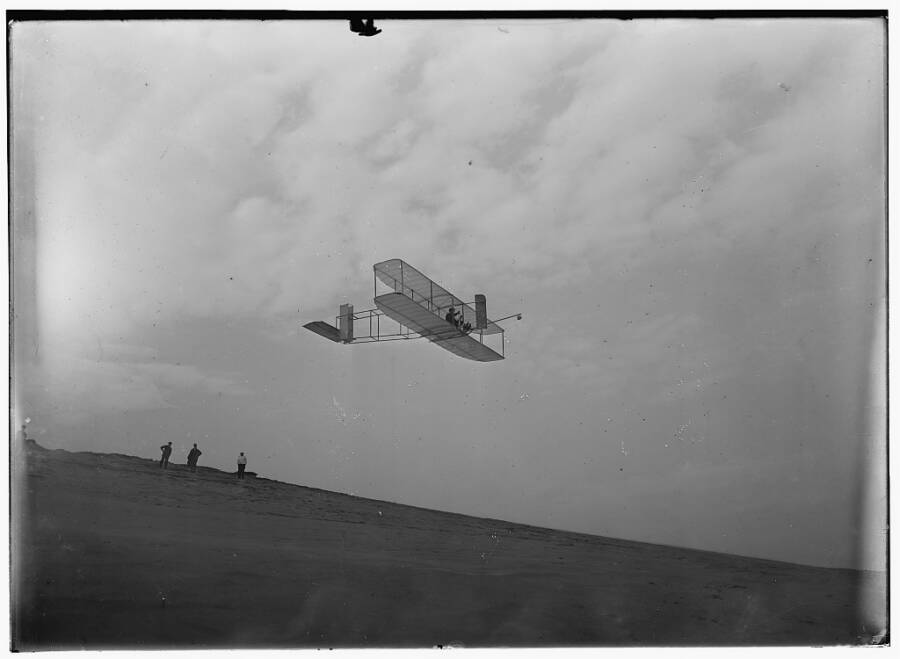
Library of CongressOrville Wright tests a new glider design in Kitty Hawk, North Carolina. 1911.
Initial flights faced issues, however, as the glider they'd built produced less lift than expected. They still flew the craft as if it were a kite, not yet wanting to risk a human pilot on board. But while the experiments didn't produce the results they wanted, they did provide crucial data that helped the brothers refine their glider design and improve performance.
"I confess that in 1901, I said to my brother Orville that man would not fly for 50 years," Wilbur would later recall while giving a speech in France in 1908.
However, the Wright brothers still wanted to try. They first expanded the glider's wingspan from 17 to 22 feet, but this model, too, failed to perform satisfactorily. So, in 1901, the Wrights constructed a wind tunnel at their workshop in Dayton that allowed them to test over 200 wing designs systematically.
Through these tests, they discovered that longer, narrower wings were more effective. The brothers also refined their understanding of the Smeaton coefficient of air pressure, a constant used in calculating lift, determining that the widely accepted version was incorrect.
In 1902, the brothers returned to Kitty Hawk with a new glider that had a wingspan of 32 feet and a more efficient control system, including a movable rudder linked to the wing-warping mechanism. This allowed for coordinated turns, solving the control issues that had plagued previous models. They conducted more than 1,000 flights, some lasting up to 26 seconds and covering distances of more than 600 feet.
The tests demonstrated that their ideas were correct — and gave them the confidence they needed to apply these innovations to powered flight.
Development Of The Wright Flyer And The First Powered Flight
Wilbur and Orville Wright knew that transitioning to powered flight would require a propulsion system that was both lightweight and powerful. Unable to find a suitable engine on the market, they collaborated with their bicycle shop machinist, Charlie Taylor, to build a custom 12-horsepower engine that weighed approximately 180 pounds.
"With 12 horsepower at our command," Orville said, "we considered that we could permit the weight of the machine with an operator to rise to 750 or 800 pounds, and still have as much surplus power as we had originally allowed for in the first estimate of 550 pounds."
The Wright brothers also faced the challenge of designing efficient propellors, ultimately creating two counter-rotating "pusher" propellers. The completed aircraft, known as the Wright Flyer, featured a wingspan of 40.3 feet and a canard (forward elevator) configuration that was consistent with their previous successful glider designs.
On Dec. 17, 1903, at Kill Devil Hills near Kitty Hawk, where they had established their camp, Orville and Wilbur Wright achieved the first controlled, sustained flight of a powered, heavier-than-air plane. Orville piloted the inaugural flight, which lasted 12 seconds and covered 120 feet.
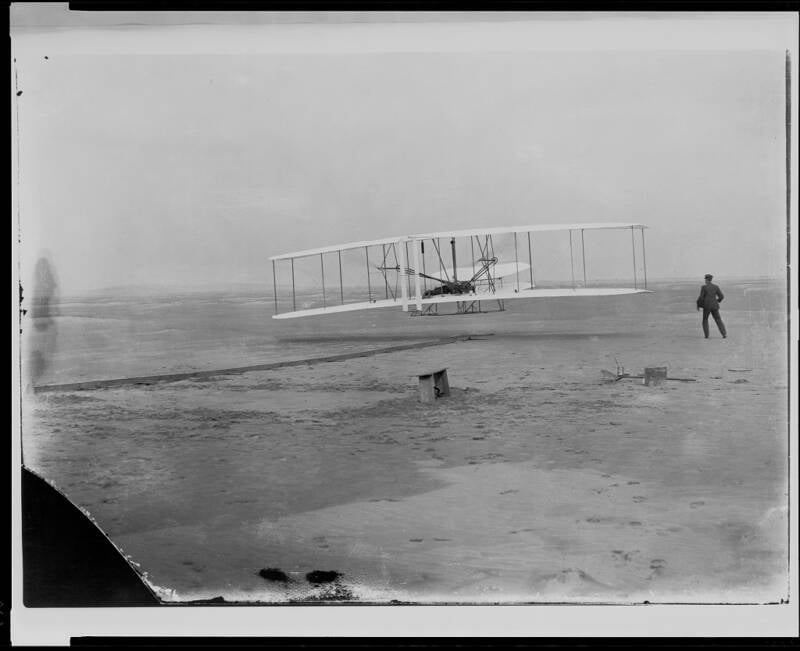
Library of CongressOrville Wright at the controls of the airplane with Wilbur Wright running alongside during their first successful flight at Kitty Hawk, North Carolina. Dec. 17, 1903.
They completed three more flights that day, with Wilbur's final flight covering 852 feet in 59 seconds. Five locals witnessed these flights, cementing the moment in history.
The Wright Brothers' Final Years And Legacy
Following their success, the Wright brothers were far from content to rest on their laurels. In 1904, they constructed the Wright Flyer II, which featured improvements over their initial airplane but also brought new challenges. They tested this model at Huffman Prairie, a field near Dayton, which had less favorable winds than Kitty Hawk and highlighted the need for better takeoff mechanisms and flight control systems.
Once again, they returned to their workshop and refined the aircraft. A year later, they introduced the Wright Flyer III, which had a more powerful engine, a stronger frame, and crucial design modifications that greatly improved its stability and control. In the end, these changes culminated in the first practical airplane capable of sustained and maneuverable flight. They put it to the test on Oct. 5, 1905, when Wilbur piloted the Flyer III for a record-breaking flight spanning 24 miles over the course of 38 minutes.
Realizing the magnitude of their achievement, Orville and Wilbur Wright then made the decision to cease flying until they could secure patents to protect their invention.
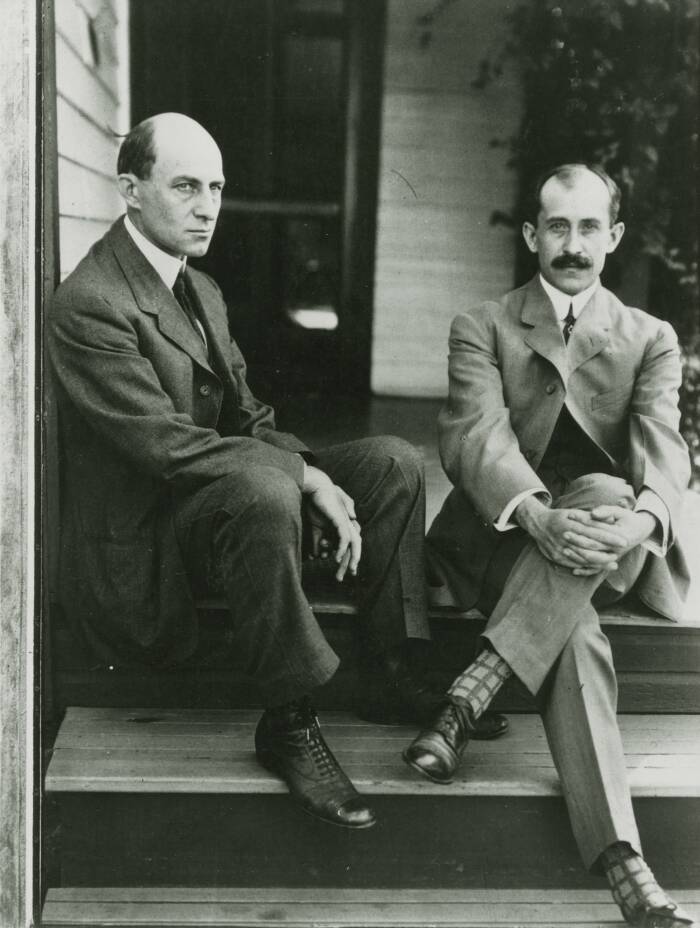
Public DomainWilbur (left) and Orville Wright on the porch of their home in Dayton, Ohio. 1909.
Three years later, they signed contracts with the U.S. Army and French investors who wanted to build and sell licensed Wright airplanes. The Wright brothers then unveiled their invention to the public and conducted numerous demonstrations of their aircraft's capabilities. They even took a passenger, Charles Furnas, along for one flight in Dayton.
As the decade came to a close, Orville and Wilbur Wright had established both the Wright Company and the Wright Exhibition Company, which would allow them to oversee their growing business operations and teach up-and-coming pilots how to fly their machines. Unfortunately, the dynamic duo would soon be tragically torn apart.
On May 30, 1912, Wilbur Wright succumbed to typhoid fever and died at the age of 45. Orville continued their work, overseeing the Wright Company until he sold it in 1915, after which he served on the National Advisory Committee for Aeronautics (NACA), the precursor to NASA. The progress of aviation moved forward at an astronomical rate over the next 30 years, particularly during World War II, and Orville lived to see many of these changes occur.
Then, on Jan. 30, 1948, at the age of 76, Orville Wright passed away from a heart attack.
"There is no sport equal to that which aviators enjoy while being carried through the air on great white wings," Wilbur Wright once said. "More than anything else the sensation is one of perfect peace mingled with an excitement that strains every nerve to the utmost if you can conceive of such a combination."
After learning about the Wright brothers and how they changed the course of history, read about six of Leonardo da Vinci's inventions that changed the world. Then, discover who invented the telegraph.
